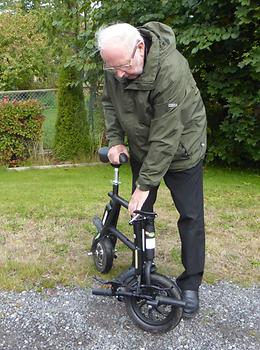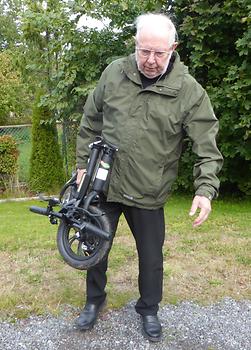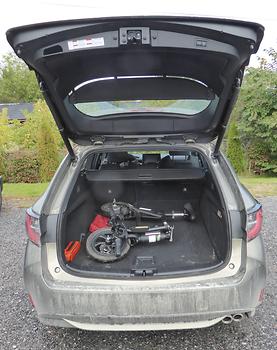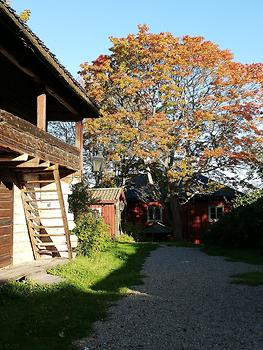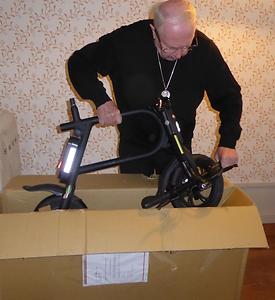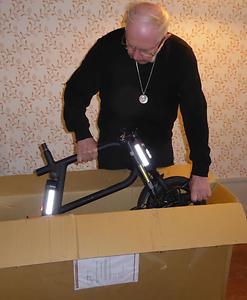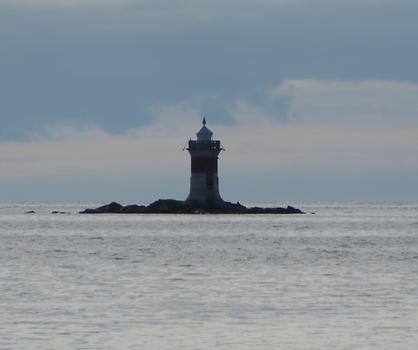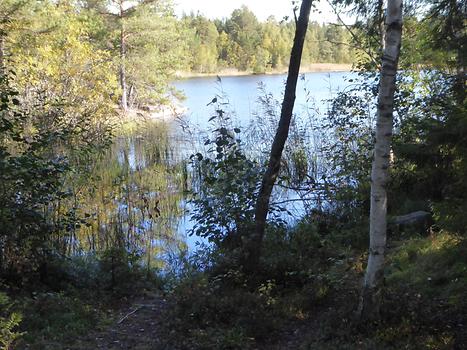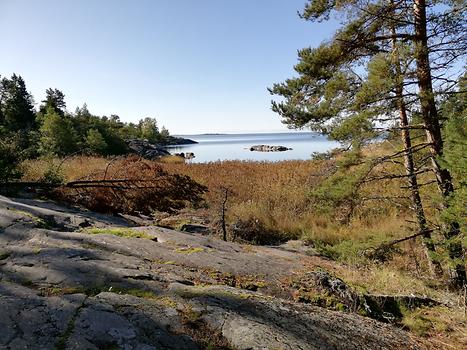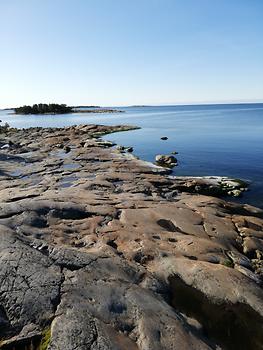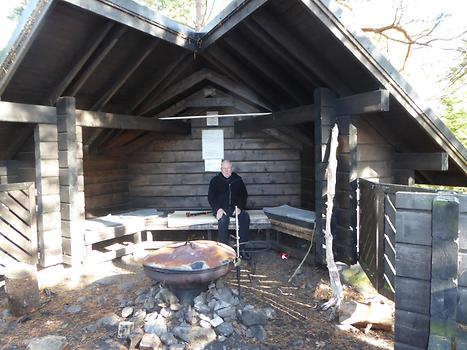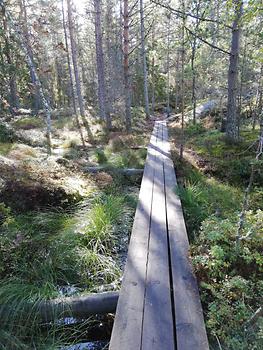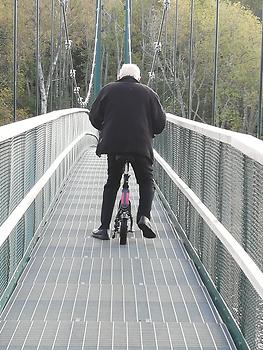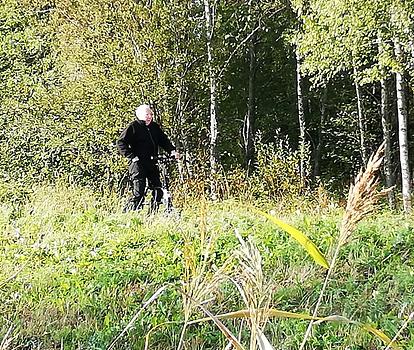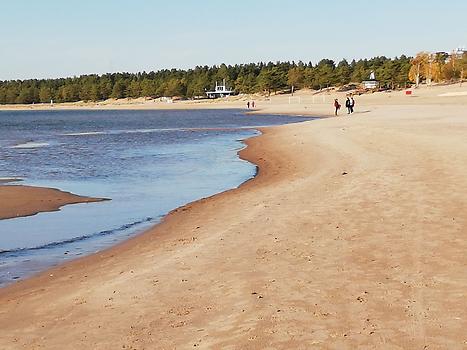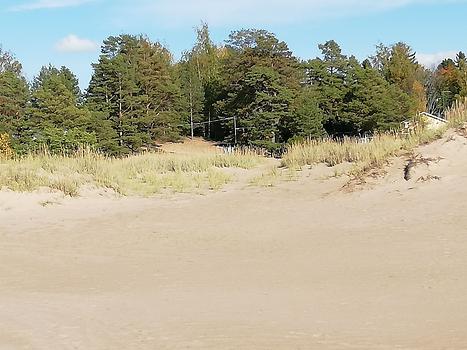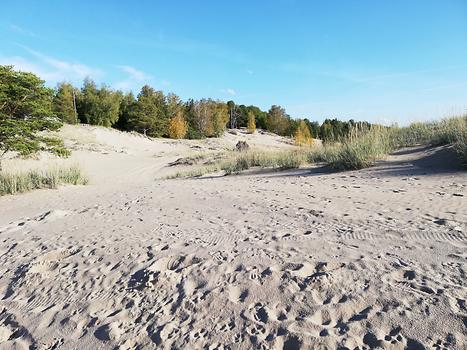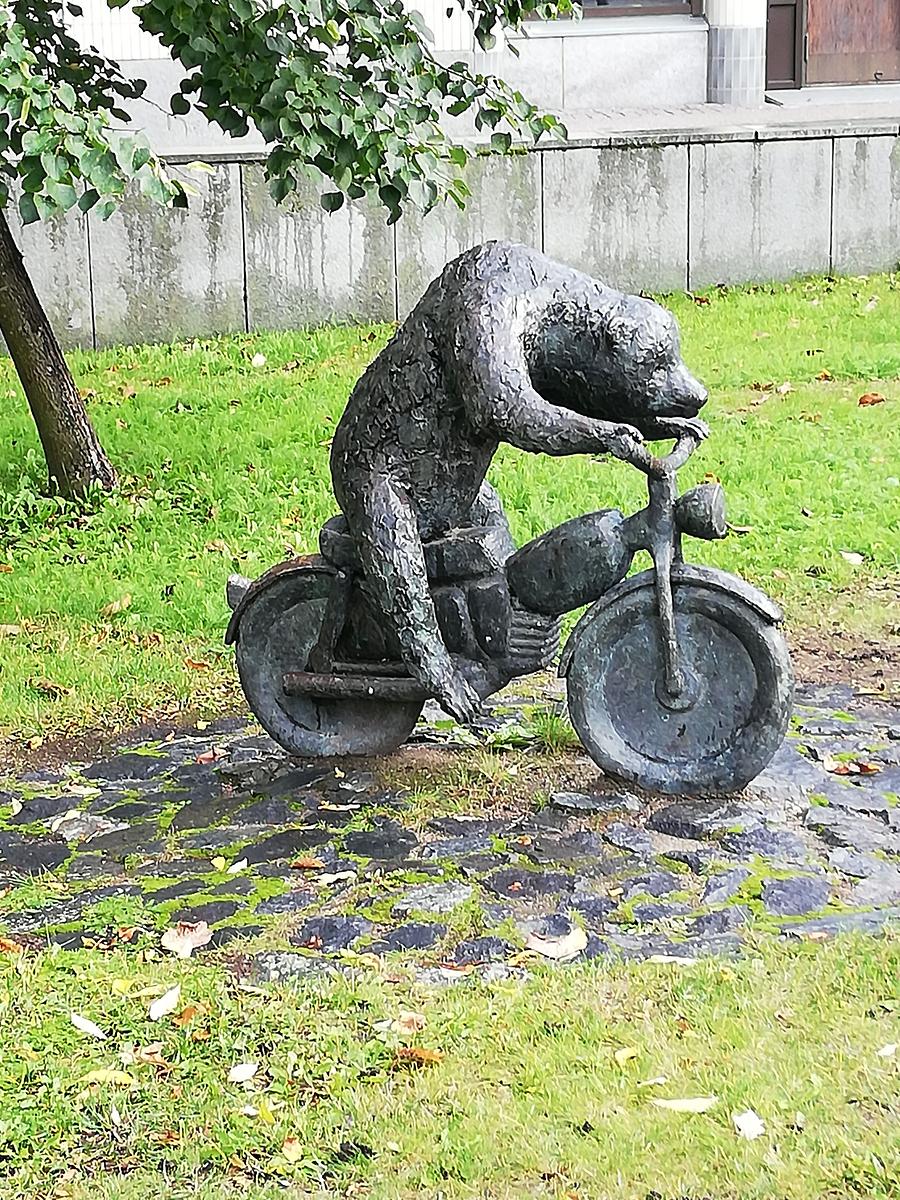Experiences with my floater#
H. Maurer This is a translation of the original VersionAll Fotos (by U. and H. Maurer, 2019) are in public domain, but please mention when you use them as source "Austria-Forum.org"
Introduction #
I start with a short summary of what lead me to use a "floater", since it may be of interest also to others with similar problems to the ones I was confronted with.I have been suffering since 2018 with strong pains in my left knee due to age related atrophy. A minor operation I had in May 2019 did not really help much, and a major operation (to replace the whole knee) was impossible for a long time due to medication I had to take for other reasons. Thus, a "conservative treatment" like exercises, using a home trainer etc. seemed the only alternative. My doctor recommended that I should not use any device like a motorozed rollator or wheelchair, since my only chance to avaiod a major operation was to stay reasonably fit and mobile.
By chance I ran into a possible solution.#
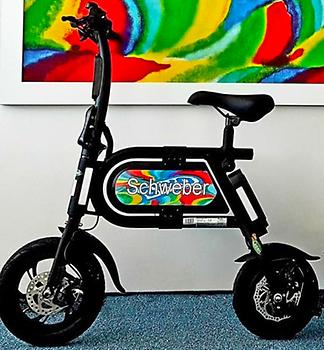
Some details#
The device is easy to use and your movements are very close to ordinary walking. You move at the speed of normal walking, possibly a bit faster since the floater my roll a bit between your footsteps.With a bit of effort and leaning a bit forward you can also move uphill or on roads with lots of gravel. On the other hand, going downhill you can lean back a bit and break with your legs, strenthening the uppper part of your legs, unless you want to use one or both of the built in brakes.
Indeed the device is much more sophisticaed than it first appears. It has a battery (hidden in the part behind the label „Schweber“) and a surprisingly powerful motor driving your back wheel if you want to. From a therapeutical point of view the motor should not be used except when really necessary, like if the trail goes uphill steeply. The battery even operates a headlight and taillight, a speedometer giving speed and distance travelled, and a bit more if you care to use it.
The real advantages#
This means, you have to use a sidewalk, if it exists, and if none exists you have to walk on the side of the raod so that you face oncoming traffic. More generally, you can use it wherever you can use a rollator, i.e. in supermarkets, restaurants, public transport. etc. As a matter of fact at least now as novelity, you often get involved in friednly talks and you are often, embarrassingly, treated better than others because you are "handicapped".
Should police stop you since you are "driving in a zone frobidden for vehicles" you have to expalin that you are nor driving but walking, and maybe you want to show the certificates in Fig.2 and 3.
Laws properly defining restrictions and permissions for floaters are still missing, yet there is this general agreement: If you have a device where you are with your feet walking 20% of the time it is a rollator and not a vehicle. It does mean that covering long distances with feet in the air, powered by the motor or because it does go downhill are not allowed and may lead to the conclusion that you have used the floater as vehicle, hence are e.g. open to fine if you use it in a area where driving is forbidden.
A big advantae of the floater is that it can easily be folded up into a bundle 90 cm long, 60 cm high and 20 cm wide. I weighs 14 kg, can easilyl be carried or put in the trunk of even a very small car.
Personal experiences#
As mentioned, I do have problems with my left leg, but can walk a few hundred meters if it comes to it, particularly if I can lean on something. This is why it also does not bother me to get off the floater when it is too much uphill and push it for a short ditance.The beginning#
It is wise to start on not so crowded sidewalks or in pedestrian zones. However, a specialist should make sure that the height of the saddle and such are ajusted for you and that you move your feet as if walking: there is the tendency to spread the feet too much to the side, not necessarily good for your joints. My first outings were 2 - 5 km. It came as pleasant surprise that all people seemed to be helpful, rather than critical as I first expected. With the floater I was suddenly much more mobile again, extending my action radius to some 15 km.In the mountains#
Over the last 25 years the mountains N and NW of Graz have been my favorite excursion area. There are many forestry roads off limits even for bikes, but permitted for floaters. Thus I was able to venture into areas that had been strenuous even when I was still in very good shape. It was easy to move on narrow trails, with one restriction: they had to be fairly smooth: big roock, roots or similar ostacles one would step over on foot easily can be quite a barrier for a floater. Of course one can carry it once for a few meters, but if the terrain is continuously rough then it is unsuitable for floaters. Hence hiking on good trails is in, bush-wacking or climbing serious mountain trails is not.Exlporing new territory#
It had been the intention of my wife an myself to visit one of my best friends, the famous Finish researcher Arto Saloamaa again, since he himself is not very mobile anymore and tries to avoid travel by plane as much as possible. We booked a nice place on the Baltic sea in middle Finland in Kristinestad Kristinenstad, Finnnland near the village my friend now lives in, lovingly supported by his daughter. We had two lengty and enjoyable visits, one time icluding a dinner in a superb restaurant, and still had 4 days to explore the beautiful neighbourhood in excellent fall weather as some of the pictures below will show.The flight Graz to Helsinki posed some problems. The Lithium-Ionen battery of the floater has 180 Wh, and planes have a limit of 150 because of the small danger of overheating/ fire. I received many suggestions:
- (1) Empty the battery to 30%. If you can prove this, you can take it along. Unfortunatly, floaters show the curently available power, but not how much is left. So this did not work.
- (2) Lithium-Ionen batteries with a maxium of 150 Wh are ok in a suitcase, but you can take two batteries with up to 101 Wh with you into the plane. Unfortunately, my battery could not be divided into two pieces.
- (3) What remaind was to take out the battery and forget using the motor.
Thats what I dedided on, not minding the additional fitness I would get when sometimes pushing the floater.
As you know, airlines do not treat suitcases or such as possibly damagable objects. The idea that some heavy stuff would be thrown on my floater caused me to pack it into a large stable cardboard box, see pitures.
Well, all went well. And we even did a bid of sightseeing the first evening:
I am skipping pictures from some of the other small excursions on narrow roads with no traffic but beautiful views, but conclude with a few pictures of Pori Pori, Finnland (famous for the river, the parks, the city hall and the old city). But particularly impressive is the long sandy beach Ytteri north of Pori thas was a surprise in the sense that the sand is packed hard enough to allow to travel on it in most places with the floater.
Summary#
There are a multitude of devices to support persons that canot walk (well) anymore. We do not discuss all that are allowed as traffic vehicles in ordinary traffic. However, we want to warn from the use of such devices if it means that no joints are moving: This way, they will get stiffer and stiffer as time goes by.Traditional rollators are condideredd to support and help with walking. Often they are easily foldable and then can also be takenn into public transport vehicles, or supermarkts, etc. By now there is a host of 3 and 4 wheel versions, with and without motor. Some of them are too heavy and clumsy to take along in a car or bus or such. It is fascinating to experience a city like Kristinestad: It has no public transporation inrastrucutre to speak of, average age is continuously increaing and with it the numer of people with mobility problems. In such an environment a four wheele rollator where one might even be able to stand on or sit in makes lots of sense to cover the comparativle small distances for shoppping or visiting friends.
The floater is attractive since yo an use it wherever you are allwoed to go adn works even on rather simple trails if they are reasonable smooht as our excursions have proven. They hav eincreased my mobilit by a facor of the, allwing me to move aroudn frialy freely in nature again.
How popular the flaoter is now in Finaldn is demonstared by the concluding picure, showing that even bears are using them these days.


